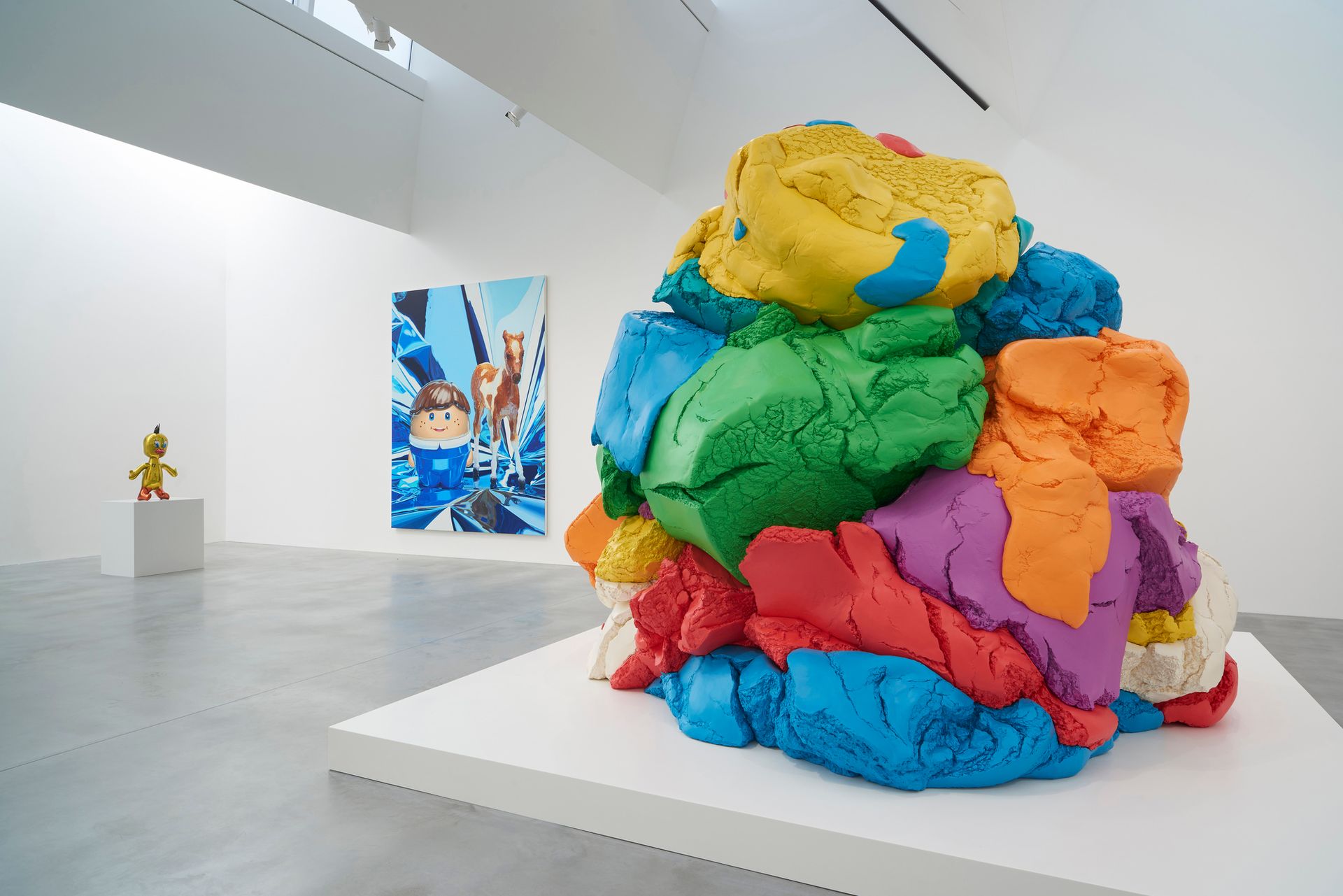Leave your cynicism at the door. Damien Hirst’s homage to Jeff Koons comes from the heart. An optimistic disposition feels de rigueur for the solo show of the US artist’s work, Now, which opened this week (until 16 October).
Hirst’s Newport Street Gallery, a £25m project, seems designed for Koon’s Balloon Monkey (Blue) (2006-13). It probably was: you can picture the architect Caruso St John’s model with a maquette of the mirror-polished monumental sculpture. This and the more than 30 works by the US artist, are almost all owned by Hirst. The two artists have curated the show. Other oversized works include Bowl with Eggs (Pink) (1994-2009), which acts as a droll counterpoint (and on entering the room, a temporary modesty screen) to a pair of erotic canvases from the Made in Heaven series, including Ice – Jeff on Top Pulling Out (1991). Parents with young children or easily embarrassed teenagers be warned.
Perhaps only Eli Broad among Koons’s collectors could organise such a show in their own museum. Like Broad, Hirst wants as many people to come and see the exhibition, extending the opening hours of his free-entry gallery in Vauxhall, south London, late every Saturday during the summer until 10pm.
Hirst’s collection includes one of Koon’s earliest works, Inflatable Flowers (Short White, Tall Purple) (1979), a readymade including vinyl blow-up flowers. Other early “inflatable” works include the Hoover sculptures, part of The New Series (1980-83), their light boxes plugged into US twin-sockets.

If visitors have a shadow of a doubt that Hirst is a power collector of Koons work, the sequence of top-lit rooms in the Newport Street Gallery’s upper floor provide proof otherwise. Hirst owns a Jeff Koons menagerie of lobsters, turtles, dolphins, and the cutie-pie bird Titi (2004-09), all made of aluminium transformed by his fabricators to look uncannily like plastic inflatables. The four-metre-high Play-Doh (1994-2014) is one of only five the artist has made so far.
In a statement Hirst says that the show, the second in his gallery, is called Now because, “Jeff’s work has always been about the present. It’s about what’s happening today.” But the lasting impression of the Hoovers, which are preserved in mint condition while the same models from the production line have long since become landfill, or the Spalding basketballs forever suspended in animation, floating in saline solution, is of time frozen. Now is all about recapturing the moment in the 1980s when Hirst first met Koons’s work and fell in love.

